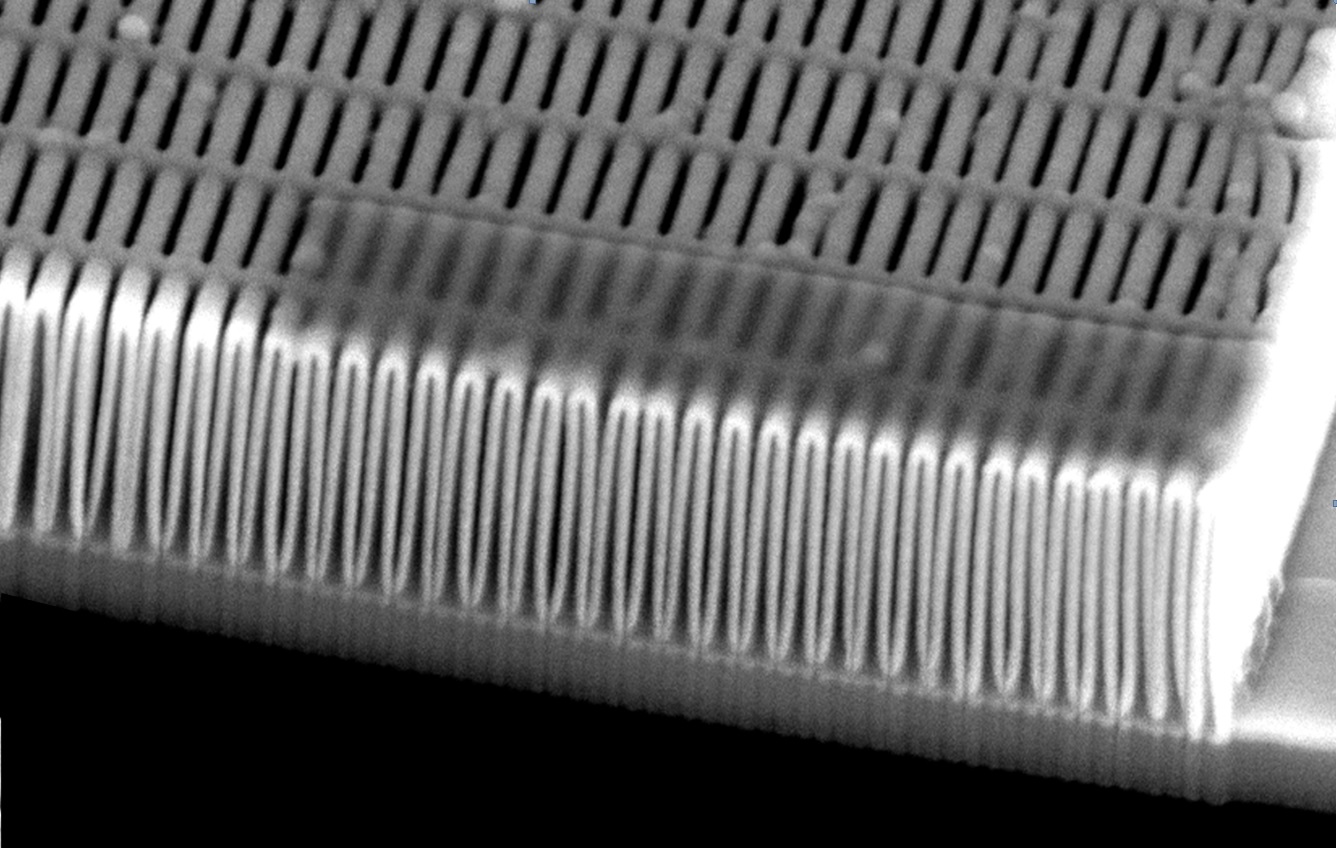According to US Department of Energy, Zone-plate microscopes play a crucial role in various critical science areas such as energy storage, catalysis, photovoltaics, energy conversion, and unconventional oil recovery.
- Current microscopes are limited to resolutions of 15-20 nm in the soft X-ray range and 50-70 nm in the hard X-ray range.
- Pushing resolutions to the 5-10 nm range will have dramatic new impacts on science and technology.
FIB cross section of a line doubled iridium zone plate (Figure from Paul Scherrer Institut)
"To further increase the resolution of Fresnel zone plates beyond the limits of electron-beam lithography, we have developed a novel technique based on the coating of a template structure with a metal layer. The electron-beam written template is coated uniformly with iridium using an atomic layer deposition (ALD) process (see figure 1). As iridium has a much higher x-ray refractive index as the template, we obtain a doubling of the effective zone density and subsequent improvement of the resolution by a factor of two compared to the template structure."
Complete story here: https://www.psi.ch/lmn/ultra-high-resolution-zone-plates



%20(1).png)

No comments:
Post a Comment